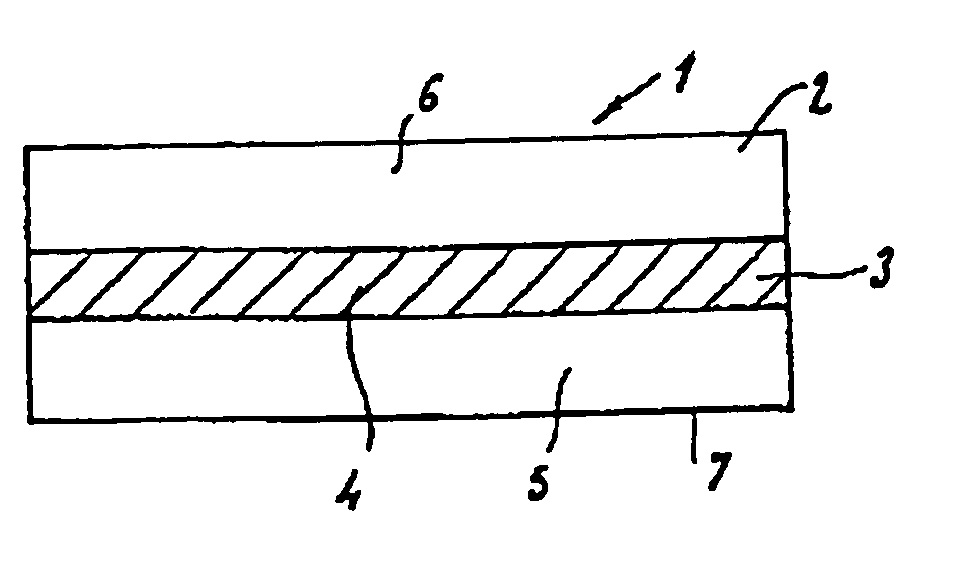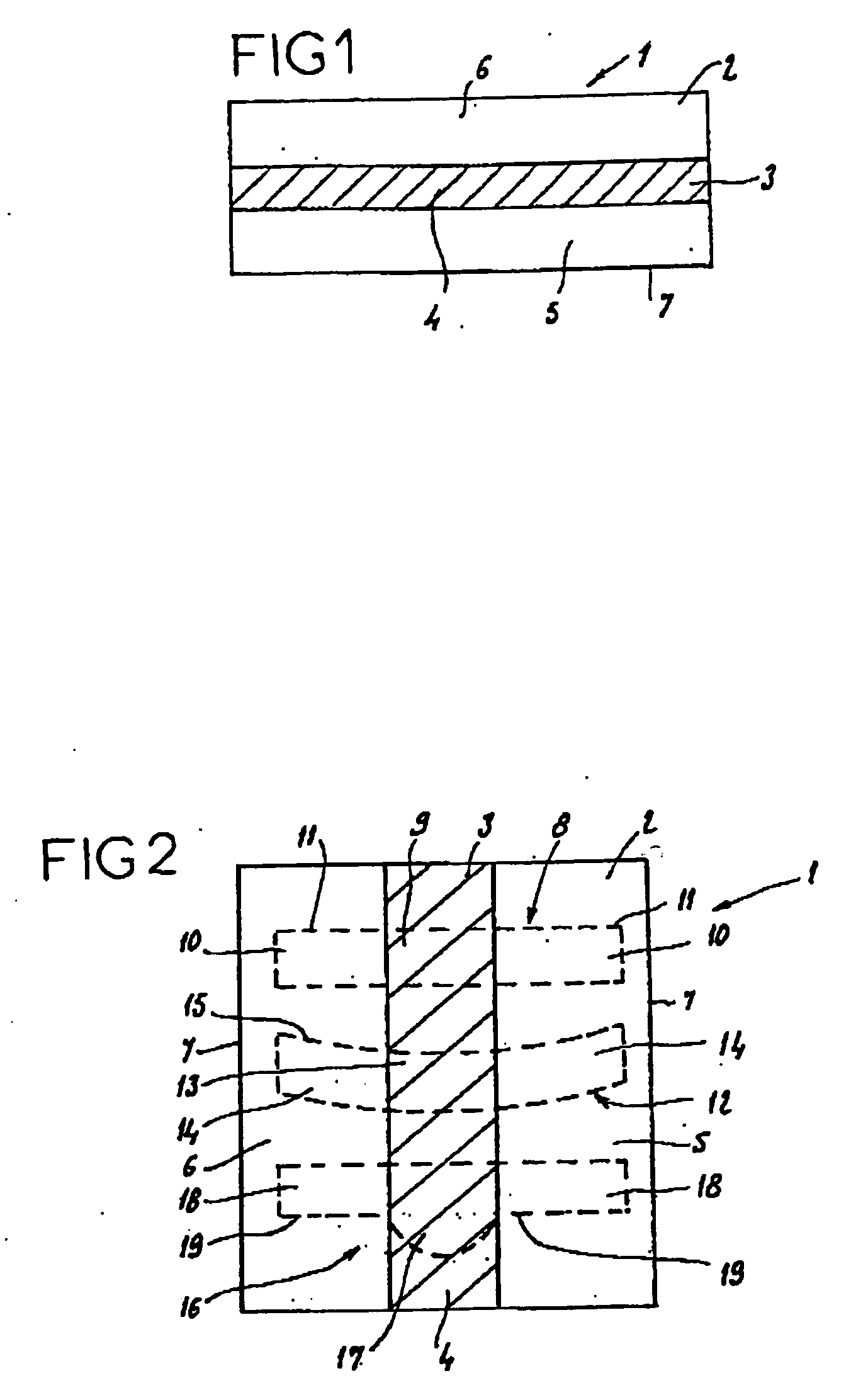Intermediate composite part for forming reinforcement prosthesis
a composite part and reinforcement technology, applied in the field of reinforcement prosthesis, can solve the problems of postsurgical adhesion and erosion, difficult to completely produce a prosthesis in situ during the operation, and laborious and dangerous to achieve the effect of completely producing a prosthesis in situ
- Summary
- Abstract
- Description
- Claims
- Application Information
AI Technical Summary
Benefits of technology
Problems solved by technology
Method used
Image
Examples
example 2
[0065] Starting from the same textile support and the same solution as were described in Example 1, the solution is sprayed onto the central band of the textile support which is to be protected. The spraying is carried out on one face of the textile. After 15 minutes to 2 hours of maturation of the gel formed on the surface of the textile, the solution is sprayed onto the other face. After the second spraying operation, the whole arrangement is left to dry under a flow of sterile air. The quantity of solution necessary to obtain a film with a final density of 0.133 g / cm.sup.2 is sprayed on. After maturation, the whole arrangement is sterilized with ethylene oxide.
[0066] An intermediate composite part is obtained whose central band of width 6 cm is an occluded zone according to the invention and whose lateral parts are devoid of absorbable material.
[0067] A strip with parallel edges and measuring 20.times.4 cm.sup.2 is cut out from this part in the width direction, giving a composite...
PUM
| Property | Measurement | Unit |
|---|---|---|
| thickness | aaaaa | aaaaa |
| thickness | aaaaa | aaaaa |
| temperature | aaaaa | aaaaa |
Abstract
Description
Claims
Application Information
 Login to View More
Login to View More - R&D
- Intellectual Property
- Life Sciences
- Materials
- Tech Scout
- Unparalleled Data Quality
- Higher Quality Content
- 60% Fewer Hallucinations
Browse by: Latest US Patents, China's latest patents, Technical Efficacy Thesaurus, Application Domain, Technology Topic, Popular Technical Reports.
© 2025 PatSnap. All rights reserved.Legal|Privacy policy|Modern Slavery Act Transparency Statement|Sitemap|About US| Contact US: help@patsnap.com


